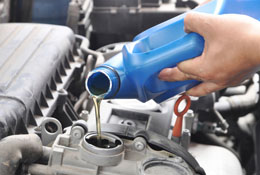
While the use of transmission fluid can make sure that your car components don’t succumb to severe wear and tear that they are subjected to – on a daily basis, very few people actually know how this fluid works to keep transmission problems at bay. This ignorance makes car users take problems like low transmission fluid and bad transmission fluid lightly, and these very problems eventually snowball into major transmission problems which reduce the life of the vehicle. Not to forget, they also come heavy on your wallet!
Transmission Fluid and How it Works?
Simply put, transmission fluid is a viscous liquid used to lubricate various moving parts of the transmission system of a vehicle. Generally, the moving parts of a manual transmission are subjected to a lot of friction as you shift gears and engage or disengage transmission. In course of this, tremendous heat is produced within the transmission. Constant friction and heating causes excessive wear and tear of these moving transmission parts, and they start corroding with time. In order to inhibit this wear and tear, and corrosion of transmission parts, one has to make sure that these parts are well lubricated, and this is exactly what the transmission fluid does – it lubricates these transmission parts.
It doesn’t just lubricate the working parts of the transmission, but also doubles up as a coolant and makes sure that the transmission doesn’t overheat. While lubrication and cooling happen to be the primary functions of this fluid, its modern variant – the automatic transmission fluid, facilitates power transmission from the engine to the transmission in cars with automatic transmission. In this case, the fluid is circulated throughout the transmission at varying pressure levels to provide the hydraulic pressure necessary to perform some of the most crucial transmission functions. The varying pressure levels at which this fluid flows throughout the transmission is attributed to the transmission torque converter.
Transmission Fluid Change
Manual transmissions are notorious for fuel contamination, and that calls for transmission fluid change every once in a while. The tiny contaminants in the same can reduce the efficiency of the lubricant to a great extent, and if you continue to drive with contaminated fluid it can reduce the life of your car transmission. In cars with automatic transmission, the problem more often revolves around degradation of transmission fluid as a result of over heating. Taking the severity of these problems into consideration, it becomes mandatory to monitor its level in the car on a regular basis. Irrespective of whether it is a car with manual transmission or automatic transmission, opting for a fluid change once in a while – ideally as stipulated by the manufacturer, is the key to make sure that transmission problems are kept at bay.
More than half of the transmission problems that you are likely to face – including transmission slipping and worn out transmission parts, are attributed to low or bad transmission fluid, and that is perhaps more than enough for you to understand why this aspect of transmission system deserves a great deal of attention when it comes to overall car maintenance.